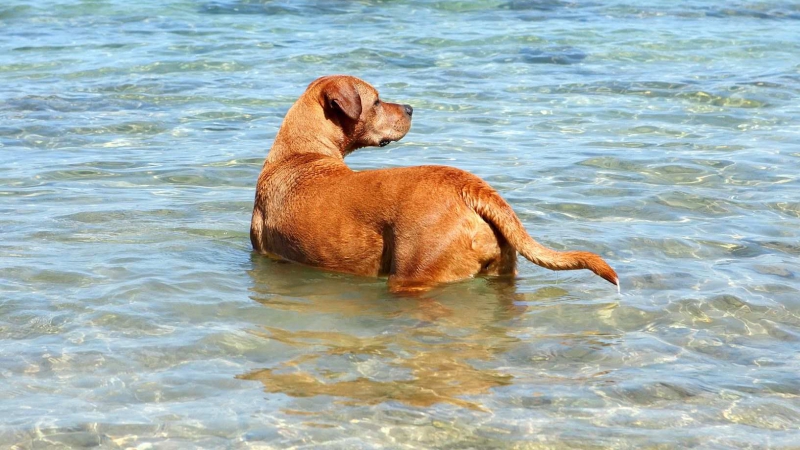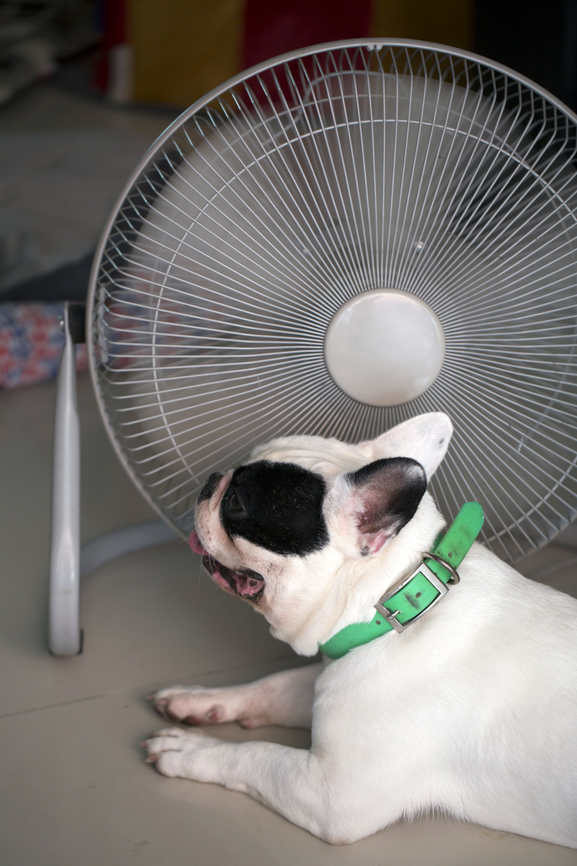
Given the hot weather we are about to encounter we think its important that you understand what we say when we talk about ‘Heat Stroke’ or ‘Heat Stress’ and how serious it can be.
yperthermia and is an elevation in body temperature and Heat stroke is a non-fever induced hyperthermia when the body’s cooling mechanisms can’t cope with the excessive external heat which can lead to multiple organ dysfunction.
It can occur in any cat or dog but is most common in long-haired dogs and short-nosed flat-faced dogs (brachycephalic breeds eg British bulldogs and pugs) and tends to be in young dogs.
Dogs cannot sweat except from their feet so they rely on panting or staying out of hot areas to cool their body temperature.
Symptoms include
- Panting – rapid and loud
- Vocalising and discomfort
- Dehydration and extreme thirst and thickened saliva
- Reddened gums
- Only small amounts of urine production
This can lead to...
- Sudden kidney failure
- Irregular heart beats
- Shock
- Blood clotting disorders
- Vomiting blood and blood passed as stools
- Disorientation and staggering
- Seizures or collapse
- Death
Causes of heat stroke include
- Excessive environmental heat and humidity (including being enclosed in a car, being left in the sun with no shade or water, having a muzzle on in brachycephalic breeds)
- Upper airway disease that inhibits breathing – which may be caused by obesity, lung or heart conditions
- Poisoning eg snail bait can lead to seizures
- Excessive exercise

“Never use ice or ice-cold water as this will shrink the skins surface vessels and can exacerbate the heat stroke”
Treatment
Early recognition of the symptoms is key to aid recovery.
- If the elevated body temperature is due to environmental conditions the first thing to do is change the environment to allow the body temperature to drop. Ideally take the dog to a room where there is air-conditioning or at least a fan.
- Some cooling techniques include spraying the dog with cool (not cold!) water or even immersing the dog’s whole body in cool water will help. Also wrapping the dog in wet towels and cooling with fans can help.
- Putting rubbing alcohol on the foot-pads and non-haired areas can help reduce body temperature although this is best done at the vets.
- Also allow your dog to drink cool water as they wish (but not cold water). Never use ice or ice-cold water as this will shrink the skins surface vessels and can exacerbate the heat stroke.
- Contact your vet as soon as possible
Your vet will need to check your dog’s temperature and monitor it. Blood tests may be required to check clotting function and kidney and liver function. Underlying disease such as obesity, heart and lung disease may need to be treated and management of the dog may be required such as grooming in summer or restricting exercise in older dogs or brachycephalic dogs especially in warmer weather.Its important to know that any dog that has suffered an episode of heat stroke is at high risk of it happening again. Being aware of what to look for can help your dog and even better taking steps to prevent it from occurring can save your dog a lot of distress.

Preventative measures
- Provide a cool shaded area with good ventilation
- Provide plenty of clean fresh water
- Bring animals indoor on hot humid days if there is air conditioning or a fan
- Don’t exercise in hot conditions. Walk your dog very early in the morning or late at night if possible
- NEVER leave your dog in a vehicle
- Seek advice regarding any underlying condition including obesity, heart disease, lung disease or brachycephalic breeds
It is also worth noting that other small mammals such as cats, rabbits, guinea pigs, ferrets, rats and mice are also very susceptible to heat stress and should be moved to coolers places in the shade with good ventilation on hot days. They also require clean drinking water at all times. Ideally they would be moved inside on extreme days to reduce the chance of heat stress.
